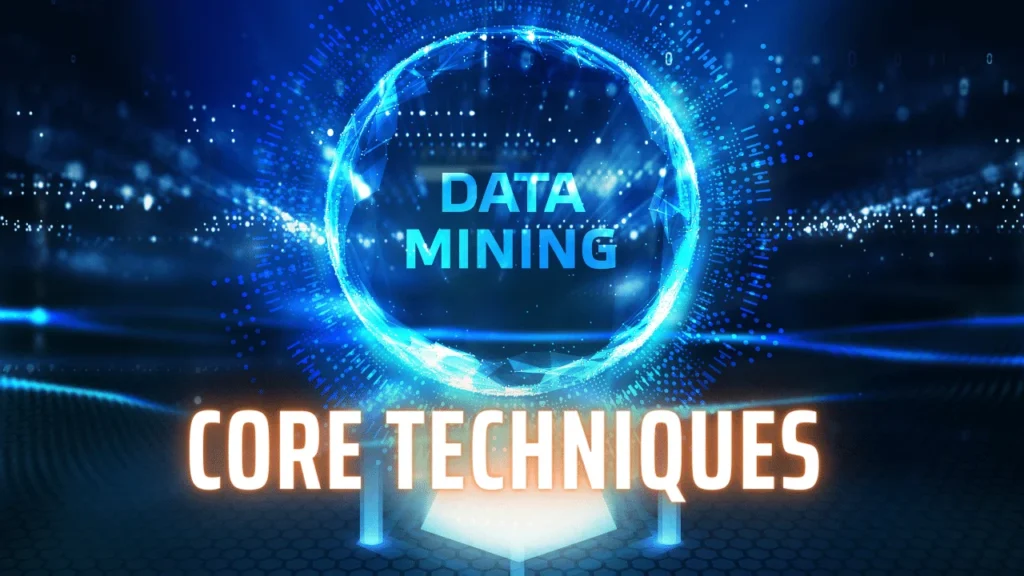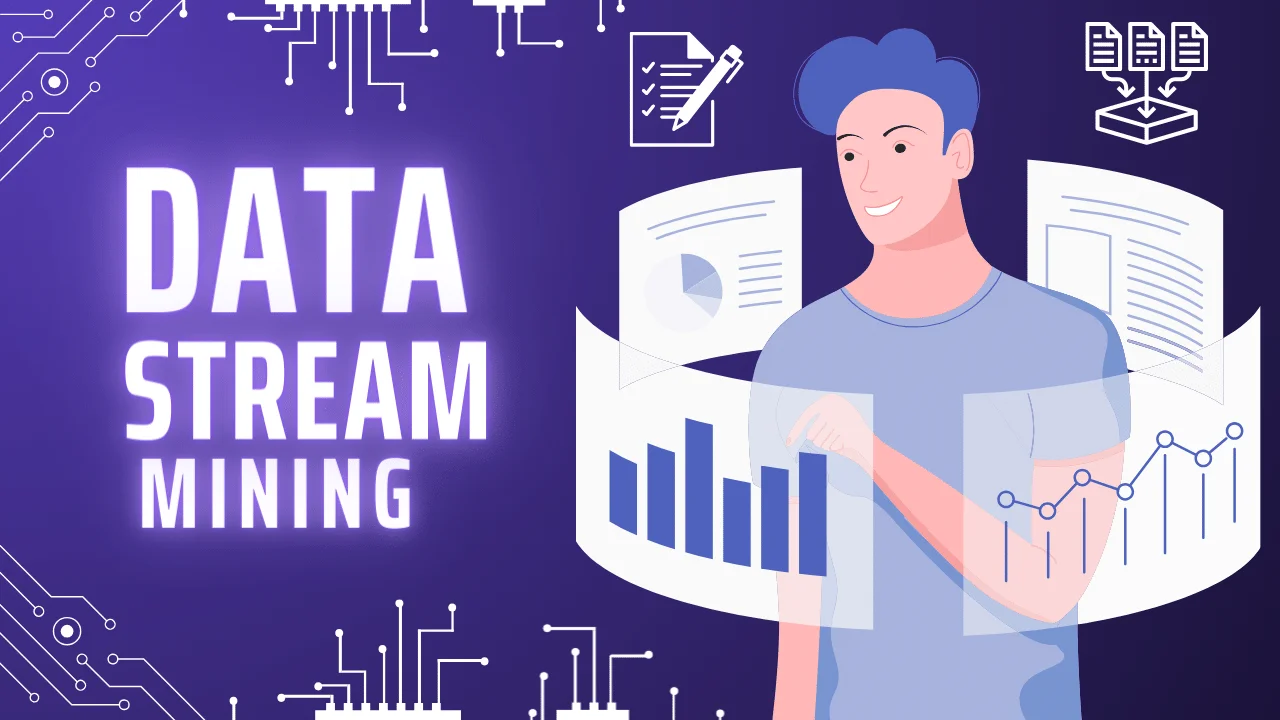The ever-changing discipline of data stream mining seeks to glean useful information and insights from data streams that are in a constant state of flux. Data streams offer distinct difficulties owing to their infinite potential, high velocity, and massive volume, in contrast to conventional static datasets. We need to create specialised algorithms that can process data in real-time because traditional batch processing methods don’t work in this dynamic environment. A variety of activities, each designed to deal with the unique properties of streaming data, make up data stream mining. These activities include pattern recognition, clustering, anomaly detection, and classification.
Understanding the Relevance of Data Stream Mining
For businesses that need to analyse and make decisions based on real-time data immediately, data stream mining is essential. Industries like cybersecurity, healthcare, telecommunications, and finance rely heavily on this discipline because their success or failure hinges on their ability to act swiftly on the most recent information. As an example, financial traders can take advantage of economic events as they happen by making trading decisions based on real-time data stream mining’s ability to detect changes in market conditions. Cybersecurity is no different; streaming data analysis aids in the rapid detection of threats and the subsequent prevention of breaches.
Core Techniques

Real-Time Data Processing
The term “real-time data processing” refers to a method of processing, analysing, and responding to data in real-time as it is received. Electronic trading and emergency response systems are two examples of situations where this is absolutely necessary.
Incremental Learning in Data Streams
Algorithms that use incremental learning update their learning model little by little as new data points become available, rather than retraining the model from beginning. If we want to learn new data patterns without incurring massive computing expenses, this approach is crucial.
Online Learning Algorithms
Algorithms for online learning update predictors incrementally and process data points sequentially. This goes against batch learning, which can be impractical when dealing with huge data streams because it requires all available data to be present at the beginning of the learning process.
Adaptive Data Mining
As a result of changes in underlying data patterns, adaptive data mining techniques automatically adapt to dynamic environments. For long-term prediction accuracy, these methods are vital.
Efficient Stream Mining
Stream mining that makes the most of available resources and works quickly is known as efficient stream mining. To achieve this, advancements in algorithmic design simplify and accelerate data processing and analysis, allowing for the prompt delivery of insights.
Advanced Applications

Handling Concept Drift
Concept drift happens when the model’s target variable’s statistical properties change over time. Maintaining an accurate and relevant model that can adapt to new patterns as they emerge requires effective strategies to handle concept drift.
Streaming Anomaly Detection
When applied to data streams, anomaly detection can spot out-of-the-ordinary patterns. For fraud detection and network security, this is of the utmost importance, as the timely recognition of out-of-pattern data can avert substantial losses.
Stream Classification Techniques
Stream classification is the process of sorting data into predetermined categories while it flows through a system. When data requires quick classification for efficient response, such as in sentiment analysis or fault detection, this method is crucial.
Clustering in Data Streams
Algorithms for clustering group data sets into collections based on shared features. Customer segmentation and the detection of regions with similar behaviour are two applications of streaming data where clustering aids in identifying groups or patterns as data flows.
Pattern Recognition in Streams
The goal of pattern recognition is to forecast future events by spotting trends or recurrent patterns in data streams. This is especially helpful in fields like weather forecasting and predictive maintenance, where early pattern recognition allows for proactive decision-making.
Acquiring proficiency in these methods and comprehending their uses is of paramount importance due to the ever-increasing volume and strategic significance of data streams. Data stream mining is constantly evolving, which presents both problems and opportunities for improving the processing of real-time data in many different sectors.
Challenges and Solutions
Efficient Data Management
The constant inflow of high-velocity streams makes efficient data management critical in data stream mining. Data reduction, sampling, and windowing are some of the methods used to deal with this. To manage data streams efficiently without sacrificing mining speed or accuracy, these methods aid in filtering out less important data.
Dynamic Data Modeling
In order to adjust to changes in the stream’s properties, dynamic data models are crucial. Methods that are designed to automatically adjust their parameters in response to fresh data are neural networks, evolving fuzzy systems, and adaptive regression trees. Applications that rely on constantly changing data, like financial market predictive analytics, require this adaptability.
Resource Constraints
In order to deal with limited resources, it is necessary to maximise algorithms’ computational efficiency. In order to accomplish complicated computations more efficiently, it may be necessary to use hardware-based accelerations such as GPU processing, create smaller models, or use approximative or heuristic methods.
Security and Privacy Concerns
Security and privacy must be prioritised due to the growing use of data stream mining in sensitive areas. In order to mine data without putting it at risk of security breaches or privacy invasions, techniques like secure multi-party computation, differential privacy, or encryption are utilised.
Innovations in Stream Mining Technology
Quantum Data Streaming
Quantum computing has the ability to process data streams at a rate that could dramatically improve data mining efficiency and speed. When it comes to processing massive, complicated data streams, quantum algorithms may be far superior to classical computers in terms of speed.
Integration with IoT Devices
A new frontier in real-time data analysis has opened up with the integration of stream mining with IoT devices. Internet of Things (IoT) devices constantly produce massive volumes of data; by utilising stream mining techniques, real-time insights and actions can be made possible from this data.
Automated Decision Making
Stream mining data can be further automated to allow for human-free decision-making in real-time. To achieve this goal, it is necessary to design systems capable of autonomously analysing streaming data and making decisions according to established models and criteria.
Artificial Intelligence in Stream Mining
Data stream mining that makes use of AI improves the capacity to understand complicated data patterns and correlations and to conduct predictive analyses. With the addition of new data, AI models can learn and become more accurate and useful over time.
FAQs
What is data stream mining?
Data stream mining is the process of extracting knowledge structures from continuous, rapid data records.
Why is real-time processing important in data stream mining?
Real-time processing allows for immediate analysis and decision-making, crucial in fields like finance and emergency response.
What is incremental learning in this context?
Incremental learning refers to algorithms that update their model incrementally as new data arrives, without needing a full retraining.
How does data stream mining handle changing data?
Techniques for handling changing data include using adaptive algorithms that modify themselves as data evolves.
Can data stream mining improve cybersecurity?
Yes, by detecting anomalies in real-time, data stream mining can significantly enhance cybersecurity measures.
Also Read: Best Mining Website: Detailed Guide
Conclusion
In terms of cutting-edge technology, data stream mining is at the vanguard, expanding the horizons of real-time data analysis. The need for strong, efficient, and secure data stream mining methods is growing as the amount of data we produce keeps growing exponentially. The Internet of Things (IoT), artificial intelligence (AI), and quantum computing are all about to change the game in this industry by bringing fresh possibilities and answers to the problems posed by big data. Improved decision-making, faster action across sectors, and industry transformation are all possible outcomes of data stream mining technologies’ ongoing development.

Brandy Stewart, an enchanting wordsmith and seasoned blogger, weaves compelling narratives that transport readers to uncharted territories. Infused with perceptive viewpoints and dynamic storytelling, Doris exhibits a command of language that enthralls both hearts and minds, leaving a lasting mark on the literary panorama.

